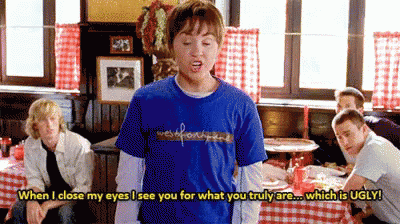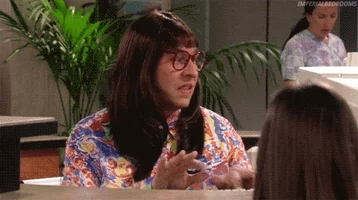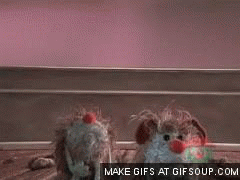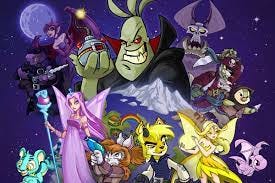Non-State Actress #15: A Good Moisturizer and Getting Banned* From TikTok
The 'Good vs Evil' mythology of technology and some skincare recommendations 💅🏽
Welcome to Non-State Actress written by me, Maggie Feldman-Piltch . Our last issue, ‘Lady Di, Taylor Swift, and the Big Machine of Proxy Wars’ explains what proxies are. It also comes with a follow up video - ‘Swifities, The Beyhive, and Proxy Wars'.
BLUF
This is part one of a series.
If liquid eyeliner is not inherently evil neither is generative-AI. Both are simply tools. Judging and understanding any tool or piece of technology, whether moisturizer or large-language models, comes down to 5 considerations: is it accessible, is it useful, is it important, is it meaningful, and is it trustworthy.
Press Play
Apply the Primer First
I appear to be banned from TikTok.
I created a TikTok account for Non-State Actress about 6 weeks ago. I felt it was essential for me to have direct experience with the platform and the content on it for a lot of different reasons - and I wanted to share the NSA videos I’ve been making.
Except, TikTok wouldn’t let me.
I take privacy and security pretty seriously, particularly when my choices will impact other people - and we know that in this case, it would. I took a variety of precautions to ensure I was limiting or at least mitigating the risks of having TikTok on a device to make sure the juice was worth the squeeze, so to speak. I’ll get into the details of the settings later, but:
TikTok repeatedly froze, banned, and locked the account because of the precautions I took to limit the application’s access to data and information on, generated by, or collectible via the device. When I messed around with the settings long enough to attempt to post a video, it was immediately flagged and removed.
I went down this rabbit hole for three main reasons:
I knew NSA would need to talk about TikTok and I wanted to be able to speak from both knowledge and experience.
I realize that this project needs to reach people who use TikTok in order for it to reach the people I am trying to reach.
For me to be good at what I do, I need to thoroughly understand all the ways people interact with information regardless of my personal preferences. I can’t opt out.
So, it’s time to talk about TikTok and lots of other platforms and pieces of technology. The plan is to start with the Good v Evil Mythology (that’s this post!) then move on to primers on some of the kinds of tech people seem focused on these days.
I’m releasing some really rad video content just for paid subscribers, so those subscriptions are on sale through April 13:
Blend the Base
We’re hearing a lot of words and phrases around technology these days and it’s stressing people out. Clean beauty, metaverse, predictive AI, maximalism.
Just when I was getting my statement lip and liner vibes down alongside my digital ID, it all shifted again. It’s not that the terms are new, it’s just that it suddenly seems to be everywhere all at once and it’s easily too much. Or at least it’s too much for me. As if that wasn’t making me feel old, there’s the TikTok chaos and the Minecraft vs Roblox thing. I am aging faster than my skincare routine can handle, even with a good retinol. Or so it feels, if I let it.
When cooler and better hydrated heads prevail, I am able to see it all for what it truly is:
And by ugly, I mean violently misunderstood. Let’s fix that.
GRWM: Pre-Show
I’ve gotten a lot of requests and questions about TikTok and I’m excited to get there. First? We need to level-set. Get some clear definitions on paper (or screen?) so we’re not creating unnecessary confusion or at least have some hope of getting out of that confusion.
And fortunately for me, one of the best ways to talk about technology is skincare and make up.
Why?
Because whether its moisturizer and sunscreen or large-language models and generative-AI, we’re still talking about tools to improve on and protect something that already exists. Sometimes it’s your face and sometimes it’s your healthcare plan.
Some tools are better than others, and some tools are better for some things than others. Personal preferences, needs, allergens, and vibes cannot be overlooked. We should all be moisturizing and using sunscreen, but while I am forever a Kate Somerville Goat Milk and Supergoop Unseen Screen girl there are people I love and care about who would rather die than be separated from La Mer or CeraVe.
Most importantly, and most useful for this particular conversation:
I would also say the criteria for selecting, using, and grading both the skincare and make-up and technology are exactly the same. We’re focusing on that criteria today - we’ll come back to explain some of the various kinds of technology.
Let’s Meet Our Judges
Much like the judging Olympic gymnastics, there is a whole lot of subjectively wrapped around some fairly clear definitions here.
The categories are:
Accessible
Useful
Meaningful
Important
Trusted
These overlapping yet specific considerations are durable enough to ensure you’re picking both the right lip shade and formulation for the occasion (for me the answer is almost always Urban Decay Vice Lip Bond Glossy Longwear Liquid Lipstick in Luv Ya Backtalk) and building the machine-learning tool to alert to possible money-laundering link to transnational crime.
If that’s not efficiency, what is?
And the best part? Every single person on Planet Earth gets to decide if a piece of technology is these things to them. There is no right or wrong answer on the individual level - just like there is no right or wrong lip shade.
Accessible
Accessible means can you literally get and interact with the tool. How do you measure accessibility? By how easily all different kinds of intended users get a hold of and use something to the full capacity of the creator’s intended use case.
Like, if it’s an app you need and you have an iPhone but it’s only available for Android? Not accessible.
If you’re asking generative-AI for a picture of a BearGirl leading an army of badgers to fight for democracy, but the format isn’t visible for low vision users? Not accessible.
Is the physical structure and packaging of your cream blush resulting in ‘Big Comfy Couch’ instead of ‘Latte Face’? Not accessible - unless you’re aiming for literal clown make up.
Useful
Does the technology serve a purpose for people that actually matters for users or did someone make a piece of technology simply because they wanted to Be An Entrepreneur, bro?
Is the tool making the world a bigger, more possible place by helping you decide what to order for dinner or is it simply a virtual Russian Roulette where you try to dodge being rickrolled?
You could absolutely demonstrate usefulness for both options, by the way. Perhaps even equally in some cases.
Important
Just because a piece of technology is offering something does not mean anyone wants it - or needs it.
Predictive models that can alert someone ahead of an epileptic seizure? Important (if you have one of these models, let your girl know 💅🏽).
Algorithms to ensure my feed is 100% cute pitbull content 100% of the time? Important.
Hologram of Curt Schilling spewing anti-democratic ickiness to remind me the good lrd giveth and she taketh away? Important only if the goal is trigger that seizure we just talked about.
Do people understand what this piece of technology has to do with them and their lives either as they currently live them or as they strive for their lives to be? That’s what we need to know here, friends.
Meaningful
Meaningful is different from useful. It’s also different from important. They are all siblings but not twins. Or triplets.
Meaningful is the emotional attachment you have to the Tarte Amazonian Clay Gold Shimmer Powder that you *know* is too old to use but you can’t just throw it out (RIP but here’s the ‘new’ version).
It’s the feeling you got when you learned your little brother created a fleet of armored vehicles to protect his library in Minecraft.
It’s when the ‘Color Match ID’ actually works in Sephora, even if you are surrounded by 11-year-olds smashing Drunk Elephant to the ground.
You might get ‘em with useful, important, accessible, trusted tech - but they’ll leave you without the meaning 🙃.
Trusted
Picture this:
The technology promises to do A Thing, and only A Thing. It promises not to share your information with anyone, it promises to work well, it promises not to eventually use all the data to control the cultural hive mind of a democracy and guide it slowly and then all at once towards authoritarianism by capitalizing on your emotional attachment.
And then you find out the technology doing A Thing is An Attempt to Make Scientology everyone’s vibe, and you feel really weird about it.
That weird feeling? Broken trust.
This is the hardest part, because trust is hard. It requires nuance and is basically a living, breathing thing. Trust is nearly impossible to build and even harder to keep, particularly in technology.
Why?
Because mistakes happen. Situations change. We change. Don’t believe me? What were you doing to your hair/skin/nails in 2006?
Things break or get broken. If the trust is built on the absence of negative situations rather than the ability to make it through storms? Trouble with a capital T.
Trust is so deeply personal and most of the time technology is used by enormous gobs of people. And each one of those people within each one of the gobs of people has their own criteria for trust! If everyone is defining successful differently but interacting with the same tool…what happens?
Much like the gap between the promise and delivery of ‘Barely There Foundation’ offering seamless total coverage that looks exactly like your natural skin - failure is totally the most likely option.
Wrap Up
It’s unrealistic to require 10s across the board for every piece of technology or every eye shadow every single time. If perfection is your criteria, you won’t be picking anything. It’s about meeting a minimum threshold and having the right mix, a long-lasting lipstick isn’t the most hydrating and the most accessible large-language model may not offer the most trustworthy answers. We have to prioritize, weigh the risks, and decide how to engage - or not.
Like in most real life situations, we’re looking for Pareto optimal (the best possible choice) or at least Pareto efficiency (the best possible choice for ourselves). Depending on the choice and the situation you’re in, you do your best to do your best. No piece of technology or tool is perfect, but is the risk of using it far greater than the cost of opting out?
Sharing your location with Google Maps to get to the grocery store in an unknown neighborhood and keep Find My iPhone functional knowing other apps and actors may access and aggregate that data? You decide.
One of the best parts of being in a democratic society is getting to decide if something is worth it for you. One of the hardest parts is figuring out what to do when your answer is yes and that makes life harder for someone else - we’ll come back to that (and Pareto optimality/efficiency) next time.
For now:
Technology, like large-language models, generative-AI, and credit cards, is a tool. Much like the Urban Decay Naked palettes, those tools can be used for good or evil and the choice is almost entirely up to us. Categorizing a tool as inherently bad is the technological equivalent of an incel ranting about how contouring - and in fact all make up - is proof that women are “bad.” Don’t be that guy, don’t over do it, and don’t decide to opt in or opt out until you know what you’re doing and why.
Gimme More: Special Edition
This framework is pretty useful, and it’s even more useful when applying it to a specific example!
I’ve created a series of short (like, less than 90 seconds each) videos diving into each component of the framework a little more deeply and talking about my TikTok feels. Those videos will go out to Paid Subscribers over the next few days - so now’s a good time to become one!












